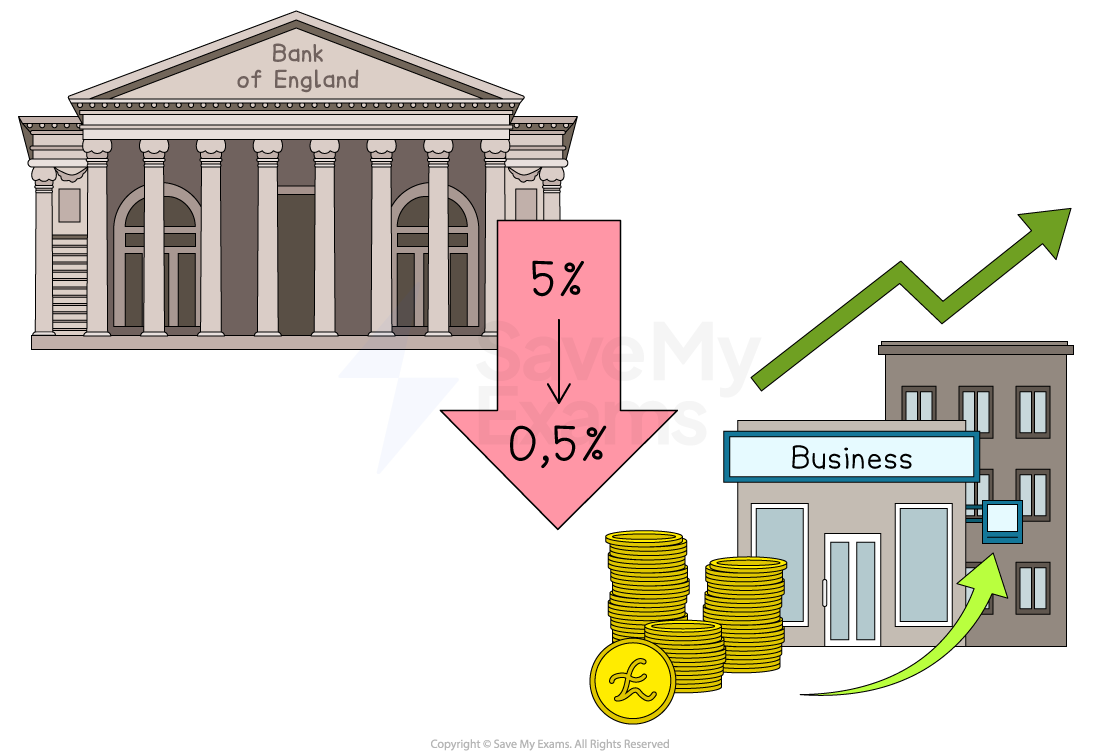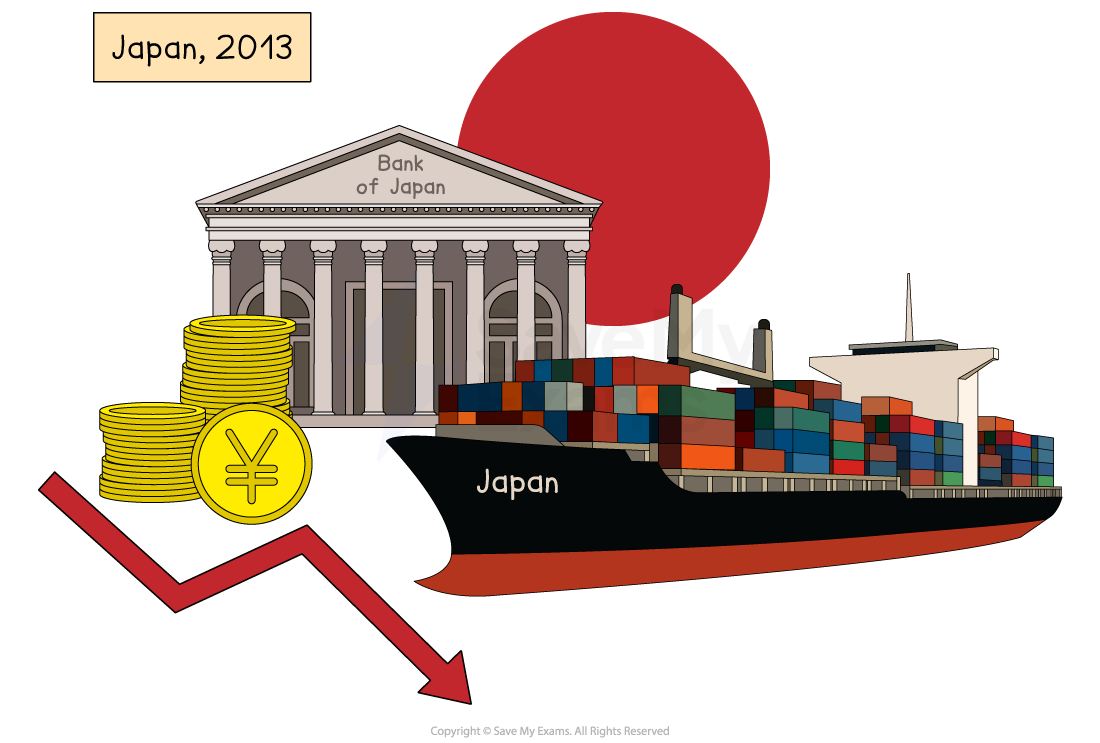Syllabus Edition
First teaching 2025
First exams 2027
Monetary Policy Measures (Cambridge (CIE) IGCSE Economics): Revision Note
Exam code: 0455 & 0987
Understanding monetary policy
Monetary policy involves adjusting the money supply so as to influence total (aggregate) demand
The money supply is the amount of money in an economy at any given moment in time
It consists of coins, banknotes, bank deposits and central bank reserves
The Central Bank in each economy is responsible for setting monetary policy
The Bank's Monetary Policy Committee usually meets 4-8 times a year to set policy
The three main instruments of monetary policy
1. Changes in interest rates
The central bank can raise interest rates to make borrowing more expensive and saving more attractive, slowing total demand and inflation
It can lower interest rates to make borrowing cheaper, encouraging spending and investment and boosting growth
Case Study
UK, 2009
Following the global financial crisis, the Bank of England cut its base interest rate from 5% in 2008 to 0.5% by 2009.

This made borrowing cheaper for households and businesses, encouraging spending and helping the economy recover from recession
2. Changes in the money supply
Increasing the money supply (e.g., through quantitative easing) can encourage more lending and spending
Reducing the money supply can slow down total demand and help control inflation
Case Study
Eurozone, 2015
The European Central Bank introduced a €60 billion-per-month quantitative easing programme to increase the money supply. This aimed to stimulate borrowing and investment, raise demand, and push inflation back towards the 2% target
3. Changes in the foreign exchange rate
A lower exchange rate makes exports cheaper for foreign buyers and imports more expensive, boosting total demand for domestic goods and improving the balance of payments
A higher exchange rate makes imports cheaper, which can reduce inflation but may hurt export competitiveness
Case Study
Japan, 2013
The Bank of Japan used monetary policy to weaken the value of the yen as part of “Abenomics”.

The lower yen made Japanese exports more competitive in global markets, helping to boost growth and reduce deflationary pressures
The effects of monetary policy on government macroeconomic aims
When a policy decision is made, it creates a ripple effect through the economy, impacting the macroeconomic objectives of the government
To understand the effects of monetary policy on an economy, it is useful to know how total demand (gross domestic product) is calculated
Total (aggregate) demand = household consumption (C) + firms' investment (I) + government spending (G) + exports (X) - imports (M)
From this, it is logical that changes to monetary policy can influence any of these components – and often several of them at once
Economic growth
Lower interest rates and increased money supply boost spending and investment
Low inflation
Higher interest rates and reduced money supply can slow price rises
Low unemployment
Expansionary monetary policy creates demand, leading to job creation
Healthy balance of payments
Adjusting exchange rates can improve trade competitiveness
Sustainability
Low-interest loans for green projects or incentives for clean technology investment can support environmental goals
Examiner Tips and Tricks
In case study questions, state the policy measure, describe the action taken, and link it clearly to the macroeconomic aim it supports
Examples of monetary policy
Examples of contractionary monetary policy
Example 1 | The Central Bank increases interest rates |
|---|---|
Effect on the economy |
|
Impact on macroeconomic aims |
|
Examples of expansionary monetary policy
Example 1 | The USA Federal Reserve Bank commits to $60bn a month of quantitative easing |
|---|---|
Effect on the economy |
|
Impact on macroeconomic aims |
|

Unlock more, it's free!
Did this page help you?